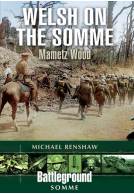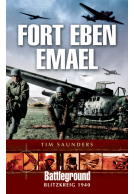Beaucourt (Paperback)
Somme
Imprint: Pen & Sword Battleground
Series: Battleground: WWI
ISBN: 9780850528534
Published: 1st August 2001
Last Released: 1st August 2007
(click here for international delivery rates)
Order within the next 4 hours, 15 minutes to get your order processed the next working day!
Need a currency converter? Check XE.com for live rates
| Other formats available | Price |
|---|---|
| Beaucourt ePub (23.2 MB) Add to Basket | £6.99 |
Beaucourt is one of the last parts of the Battle of the Somme still to be covered, until now, by the splendid Battleground Europe Series. It was also one of the last actions of the Battle of the Somme, 1916.
The eventual capture of Beaucourt along with Beaumont Hamel forced the Germans to retreat to their new defensive position known as the Hindenburg Line. The Battle for Beaucourt was also known as the Gough Offensive, led by General Gough, with a large proportion of the troops involved being from the Royal Naval Division. Indeed, Beaucourt is where Bernard Freyberg of that Division won his VC.
Following the usual Battleground style, readers are taken on a voyage of discovery through the village of Beaucourt and along the banks of the Ancre in the direction of Cambrai.
Selling Points
* Fills a crucial gap in the Battleground Europe coverage of the Somme area.
* Experienced and respected author who is a first class exponent of Battleground formula.
* Great maps and illustrations.
In detail the Guide goes on to build up the story of the attack of the 39th Division on 13th November, and then the subsequent fighting on the 14th November; all as part of the Battle of the Ancre. As ever, a tremendous piece of personal anecdotal history is developed via the integration of the story of the three Victoria Crosses obtained within this location
Jon Sandison
Within the book, are continual visual and hard hitting maps and photographs, that further bring to life the outstanding narrative contained within. What I particularly like about this volume is the integration of examples of archaeological finds, thus reminding the reader of the continual link, and indeed obligation, of being a 'battlefield tourist', 'historian', and archaeologist at the same time. Here, there is no distinction.


























